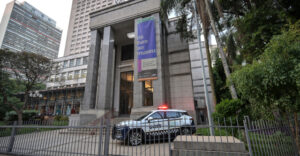In the 18th and 19th centuries, the Western world worked itself up into a mass hissy fit over the idea of people touching themselves. Judeo-Christian tradition had already been damning masturbation as a misuse of sexuality for ages, but Victorian era prudishness and the Great Awakening and other religious revivals in America created a perfect storm for people to really get obsessed with it.
Books like the anonymously authored Ononia: Or the Heinous Sin of Self-Pollution, and all its Frightful Consequences… and Samuel Tissot’s Treatise on the Diseases Produced by Onanism [masturbation] laid the groundwork for medicalizing “the solitary vice.” Soon, masturbation was no longer just a moral failing, but also a physical and mental ailment that required treatment and cures.
KELLOGG’S CURES
In the young United States, one of the loudest anti-masturbation voices was a Michigan physician named John Harvey Kellogg. The good doctor was a bit uncomfortable about sex, thinking it detrimental to physical, emotional, and spiritual well-being. He personally abstained from it, and never consummated his marriage (and may have actually spent his honeymoon working on one of his anti-sex books). He and his wife kept separate bedrooms and adopted all of their children.
Sex with your wife was bad, but masturbation was even worse. “If illicit commerce of the sexes is a heinous sin,” Kellogg wrote, “self-pollution is a crime doubly abominable.” In Plain Facts for Old and Young: Embracing the Natural History and Hygiene of Organic Life, Kellogg cataloged 39 different symptoms of a person plagued by masturbation, including general infirmity, defective development, mood swings, fickleness, bashfulness, boldness, bad posture, stiff joints, fondness for spicy foods, acne, palpitations, and epilepsy.
Read more: mental floss
Ask me anything
Explore related questions





